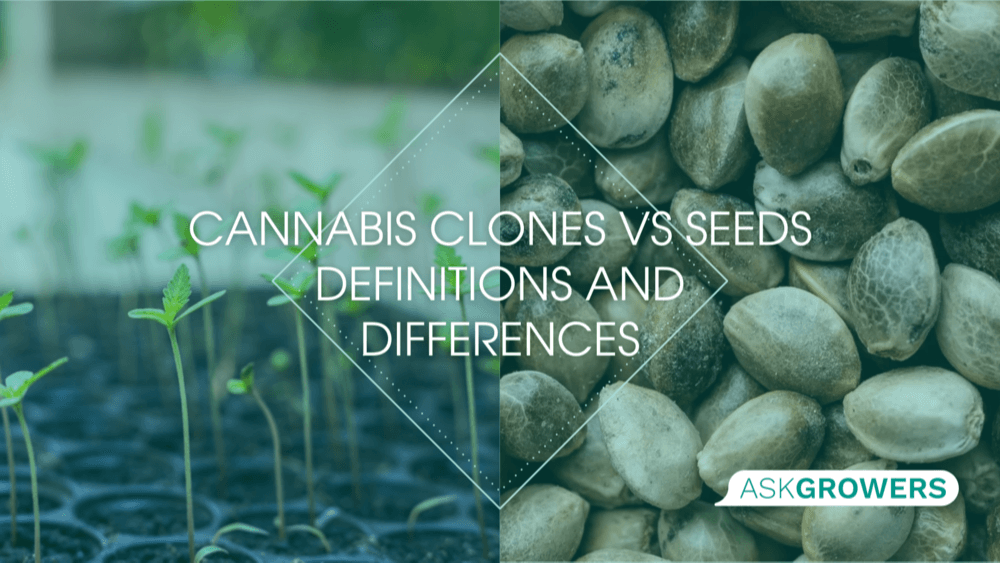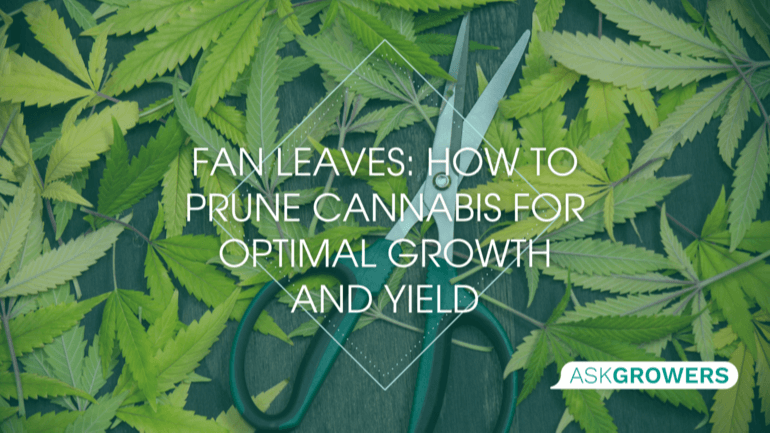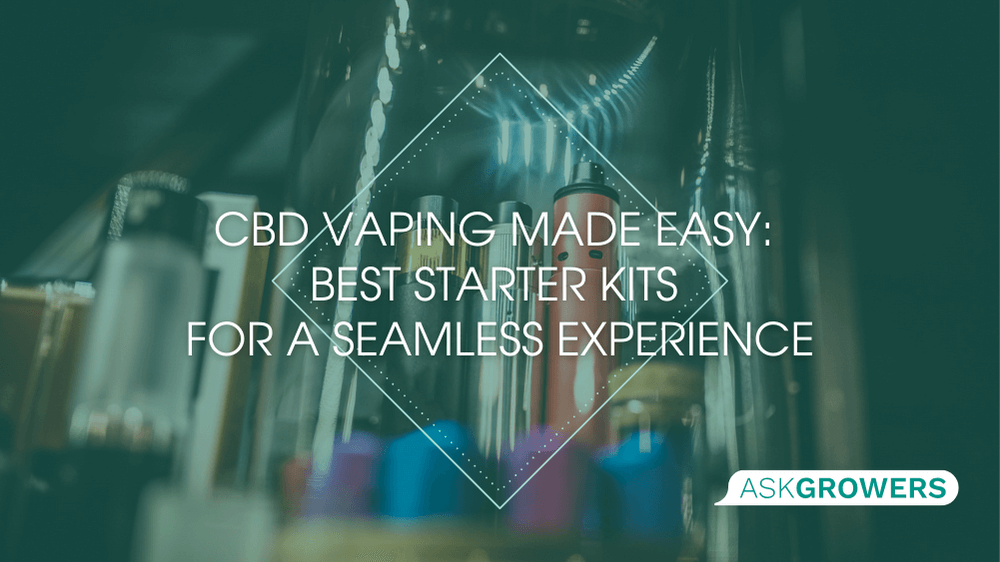What Are Cannabis Nanners and How to Deal With Them?
.png)
Cannabis bananas (widely known as “nanners”) can cause a lot of distress to a grower. They are elongated yellow growths that resemble bananas, hence the name, though they can also be white or lime green in color. These growths typically appear on buds and can grow together in bunches.
In a nutshell, these growths are male pollen sacs. They typically appear on male plants or can indicate the hermaphroditic traits of a female plant. Once they appear on buds, these sacs start pollinating everything within their reach. After pollination, female plants produce seeds instead of a cannabinoid-rich yield. Thus, the appearance of bananas is very undesirable for most growers.
In order to avoid them, a grower must know how to tell the difference between male and female weed seeds, as well as how to sex cannabis when it’s grown. But that’s not all. In this guide, we will help you gain a better understanding of this phenomenon and learn how to address it the right way.
Getting Clear on Nanners’ Meaning

As you already know, nanners cannabis is a term that defines the appearance of male pollen sacs or hermaphroditic traits on female plants. Now, let’s delve deeper into this term.
Traditionally, weed plants can be either male or female. Male plants are used for their pollen, to pollinate females and to produce seeds. Female flowers, on the contrary, are those used for producing cannabinoid-rich buds that are then used for therapeutic purposes, including the following:
Typically, pollen sacs appear on male plants. However, in some cases, a female flower can also develop these banana-shaped structures filled with pollen. If this happens, such plants are commonly called “hermies.”
Weed bananas consist of a pollen sack and anther. They can develop at different stages of the flower’s life cycle and, most often, they are a plant’s response to external stress. Unlike male pollen sacks, these growths don’t need to open to start the pollination process. Instead, they start pollinating everything around them as soon as they appear. The biggest consequences of this include decreased potency and quality of the yield due to seed production. Thus, the average grower will want to be able to spot and get rid of hermaphrodite weed buds to save the crop.
Nevertheless, this doesn’t mean that hermies are completely useless. Some breeders hope and pray for hermaphroditic plants because that’s how they feminize seeds. When a female flower develops nanners and pollinates itself, the seeds it produces have a 99% chance of growing into a female. That’s how we get feminized seeds.
Read Also: Fan Leaves: How to Prune Cannabis for Optimal Growth and Yield
Can You Smoke Flowers with Nanners?
Generally, it’s not recommended to collect and smoke a flower that contains bananas or pollen sacs. As a grower, you must be looking for high potency and quality in your buds, but nanners can really get in the way. Their presence indicates that your female plants experienced stress or turned into hermaphrodite cannabis plants, which significantly affects the quality of yield.
There are several things that can force your female plants to go hermaphroditic:
-
Improper light schedules – There are a few significant differences between feminized or male cannabis flowering. Feminized plants require firm light schedules to develop good buds. If their light schedule is inconsistent or they are exposed to light during dark periods (this is called light leaks), it gives them a lot of stress and is a common contributor to hermies. Too bright light can also lead to the development of nanners.
-
Temperature – Another thing a grower should keep an eye on is temperature. When it’s too high or low, this can also lead to the appearance of hermaphroditic traits.
-
Deficiencies and diseases – Different major problems with your plant’s health are also common triggers for nanners. These can include nutrient deficits, pH imbalance, light burn, root rot, and nutrient burn.
-
Genetics – Finally, a big role in your yield’s quality is always played by genetics. Some strains are more susceptible to stress-induced hermaphroditism, even if you grow them in perfect conditions. Thus, it’s crucial to study all the specs of the strains you are going to grow. Also, it’s important to buy seeds from trusted suppliers who feminize seeds properly and guarantee high-quality genetics.
Read Also: Cannabis Deficiencies: Symptoms and Solutions
Tips to Minimize the Possibility of Weed Nanners
 (1).png)
Now that you know more about this phenomenon, you must be wondering what you can do to mitigate the risks. Here are a few handy tips to avoid the appearance of bananas on cannabis:
-
Pick the best genetics. Unfortunately, male-female cannabis plant identification doesn’t work when you are buying seeds because they typically have no visual differences. Thus, it’s important to buy from trusted breeders and pick high-quality genetics with a low tendency for hermaphroditism.
-
Create the right environment. As a grower, you must set up the perfect space, temperature, humidity, and light for your flowers. Avoid external stresses and extreme fluctuations that lead to hermaphroditism. And avoid light leaks.
-
Keep an eye on nutrients. Feed your flowers with the nutrients it needs to develop and grow healthily. However, don’t overfeed them to avoid nutrient burn.
-
Control pests and diseases. Regularly inspect your flowers and take proactive steps to prevent any pests and diseases.
-
Master stress management techniques. Minimize the damage or stress your plants receive during their life cycle. Adhere to stress management techniques, like low-stress training, and stick to consistent watering practices.
-
Look out for nanners. Finally, you should regularly inspect your plants to see if they develop nanners early on. If this happens, immediately remove such flowers from the rest to avoid pollination.
Genetic Analysis of Nanner-Prone Cannabis
A detailed genetic analysis of cannabis plants prone to developing nanners is crucial for understanding and preventing this phenomenon. Genetics plays a significant role in a plant's susceptibility to nanners, with some strains being more prone due to inherent genetic characteristics. A thorough examination of genetic markers and traits associated with this tendency can aid in breeding and cultivating strains less likely to develop nanners. This analysis can also help identify the environmental factors that trigger this trait, allowing growers to adjust cultivation practices accordingly.
To conduct a genetic analysis of cannabis plants prone to developing nanners, researchers can use techniques such as genetic mapping and DNA sequencing. These methods allow for the identification of specific genes and genetic markers associated with the tendency to produce nanners.
Top Discussion of Growers About Cannabis Nanners
Discover the ultimate collection of forums handpicked for you, where a community of experienced growers dives deep into discussions about dealing with cannabis nanners at various stages of plant maturity. Whether you're facing this issue for the first time or seeking advanced tips to refine your approach, these forums are packed with actionable advice. Join the conversation to learn from the collective wisdom of countless growers who share their strategies, successes, and lessons learned in managing nanners to ensure the health and yield of your cannabis plants.
Nanner Situation: What to Do – In this discussion, growers exchange advice on identifying and managing nanners (banana-shaped pollen sacs) that appear on cannabis plants. Participants share their experiences on how to handle these unexpected developments, aiming to minimize their impact on the rest of the crop. Insightful tips range from environmental control adjustments to selective pruning techniques.
Urgent: What to Do with Buds with Nanners – This thread focuses on urgent measures growers can take when they discover nanners in their buds. The community discusses various strategies to prevent the spread of pollen and safeguard the quality of the harvest. The conversation covers both immediate actions and long-term prevention strategies, making it a valuable resource for growers facing similar issues.
Nanners on One Plant: What Would You Do? – A grower seeks advice on dealing with a plant that has developed nanners. The thread evolves into a comprehensive discussion on potential causes, from stress factors to genetic predispositions, and how to address them. Community members share personal anecdotes and solutions, offering a blend of empathy and expertise to navigate the situation.
Nanners and Harvest Date: Plz Help – This forum thread is a plea for help from growers dealing with nanners close to harvest time. The conversation delves into whether it's possible to salvage the situation and the best timing for harvest to optimize yield and potency despite the appearance of nanners. Responses include a mix of scientific explanations and practical advice, emphasizing the importance of careful observation and timely decision-making.

 Education
Education
 Guides
Guides




 (1).jpg)


 (1).png)

.jpg)





Be the first and share your opinion
Write a Review